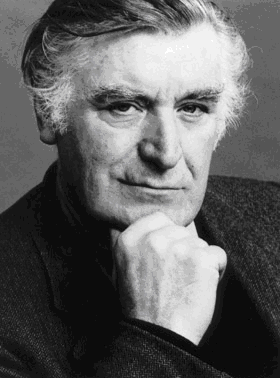One Art
BY PROF. VAROL AKMAN
Ted Hughes
Ted Hughes was born in 1930 in Yorkshire and died in 1998 in Devon. He was educated at Pembroke College, Cambridge (switching from English to archaeology and anthropology). In 1956 he married Sylvia Plath, and in 1957 he published The Hawk in the Rain to immediate acclaim. Hughes almost stopped writing verse for three years following Plath's suicide in 1963. He published many volumes such as Crow (1970), Cave Birds (1975), Gaudete (1977), and Wolf Watching (1989). "Last Letter," a poem unearthed only in October 2010, describes the events leading up to Plath's suicide. In 1984 he was appointed Britain's poet laureate. Hughes won numerous distinctions, including Queen's Gold Medal for Poetry, Whitbread Book of the Year (twice), Queen's Order of Merit, T.S. Eliot Prize for Poetry: "What happens in the heart, simply happens."
Hughes's poetry is dominated by nature, above all by animals. His obsession with them was one of the vehicles in his decision to become a poet. In a confession to London Times contributor Thomas Nye, Hughes states that he wanted to capture not just live animals but the aliveness of animals in their natural condition: their rowdiness, their "whatness" (what they share with others of their kind). The scope and complexity of Hughes's mythic enterprise is evident in his treatment of the knight in "Esther's Tomcat." St. Peter's Church, Barnburgh (aka Cat and Man Church) is famous in local legend as the site where a knight returning from a campaign fought with a wildcat (or lynx), eventually being slain by the animal on the church porch (but crushing the beast too).
Esther's Tomcat
Daylong this tomcat lies stretched flat
As an old rough mat, no mouth and no eyes.
Continual wars and wives are what
Have tattered his ears and battered his head.
Like a bundle of old rope and iron
Sleeps till blue dusk. Then reappear
His eyes, green as ringstones: he yawns wide red,
Fangs fine as a lady's needle and bright.
A tomcat sprang at a mounted knight,
Locked round his neck like a trap of hooks
While the knight rode fighting its clawing and bite.
. . .